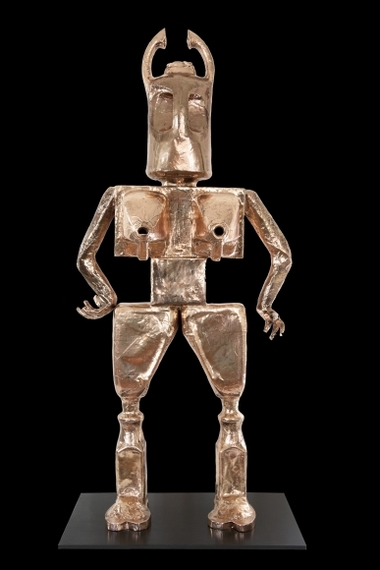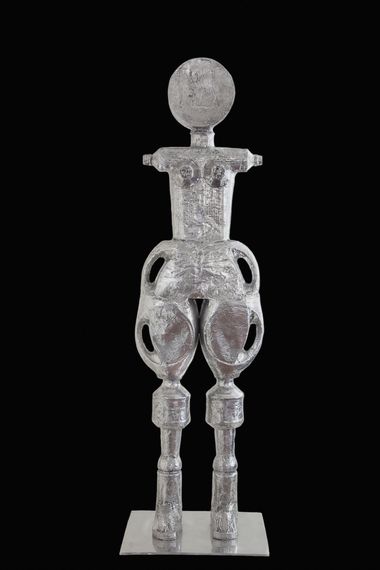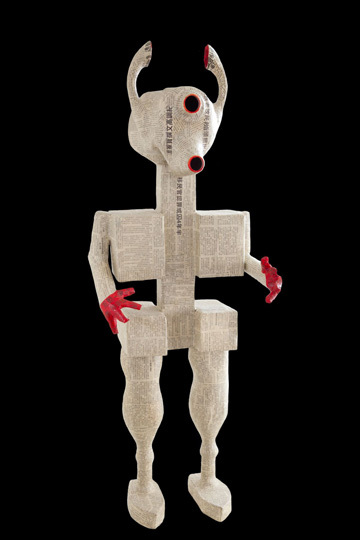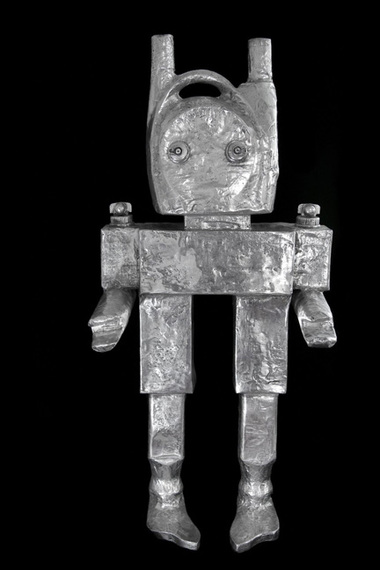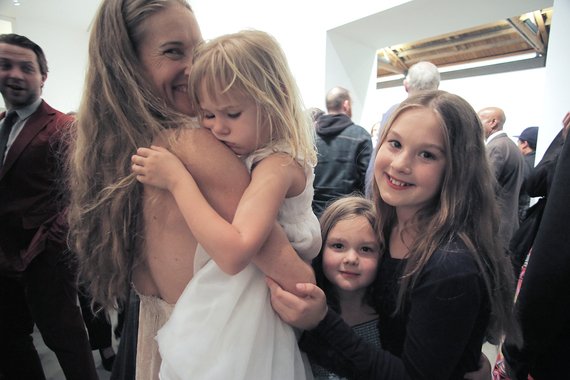![]() Note: Certain fairy tales, like "Beauty and the Beast" and "Cinderella," have been told and retold so often in mainstream American society that they're deeply ingrained in our minds. "Cinderella," which remains popular as a Disney cartoon film, has even been remade by Disney as a live action movie coming out this spring. But while so much attention is devoted to reproducing these beloved tales, there are myriad other fairy tales out there we're missing out on -- not just totally obscure yarns we've never heard at all, but infinite, fascinating variations on the standard versions of those popular tales we're used to hearing.
Note: Certain fairy tales, like "Beauty and the Beast" and "Cinderella," have been told and retold so often in mainstream American society that they're deeply ingrained in our minds. "Cinderella," which remains popular as a Disney cartoon film, has even been remade by Disney as a live action movie coming out this spring. But while so much attention is devoted to reproducing these beloved tales, there are myriad other fairy tales out there we're missing out on -- not just totally obscure yarns we've never heard at all, but infinite, fascinating variations on the standard versions of those popular tales we're used to hearing.
Below, folklorist Maria Tatar, the translator of the newly published fairy tale collection The Turnip Princess and Other Newly Discovered Fairy Tales by Franz Xaver von Schönwerth (Penguin Classics), introduces us to 10 lesser-known fairy tales that are just as beautiful and terrifying as your favorite Perrault classic.
Uncle Wolf
The "little glutton" who travels through the woods in Italo Calvino's Italian Folktales carries a basket filled with pancakes, bread, and wine for Uncle Wolf. The path is long, and the girl can't resist the goodies. She replaces the pancakes with donkey manure, the loaf of bread with lime from a stonemason, and the wine with dirty water. Uncle Wolf is outraged by the deception, and the girl races back home, hiding in a corner of her bed. No fool, Uncle Wolf chases her down and declares, "Ahem, here I go!" After all, he has a reputation to defend. An expert at doing away with "greedy little girls," he swallows the child whole. Calvino admires the primal quality of the story, a favorite all over Italy, and praises "rudimentary elements" such as "gluttony, excrement, and a steady intensification of terror."
There are several versions of "Little Red Riding Hood" in Italian Folktales, and in the notes Calvino appears to be compulsively fiddling with a story that none of his sources seem to get just right. The tale about a girl and a wolf stages an encounter between innocent prey and fanged predator, and today the girl almost always emerges triumphantly from the belly of the wolf. But in many versions -- most famously in Charles Perrault's "Little Red Riding Hood" -- she is never disgorged. The wolf snaps his jaws, swallows the girl whole -- end of story (save for an occasional moral about the perils of talking to strangers and straying from the path). The consuming idea in most variants is innocence versus seduction, but "Uncle Wolf" turns Red Riding Hood from a pretty child, adored by everyone (as the Grimms tell us), into a girl who is both greedy and lazy. While the other girls at her school are knitting, she has the audacity to go to the privy and fall asleep--a truly deserving victim, especially in light of her other transgressions, which include a love of pancakes.
Italo Calvino, "Uncle Wolf," in
Italian Folktales, trans. George Martin (New York: Pantheon Books, 1956), pp. 152-54.
Momotaro
Remember Maurice Sendak's
Where the Wild Things Are and Roald Dahl's
James and the Giant Peach? Or the Japanese folktale about Momotaro, the Peach Boy who battles monstrous creatures on a distant island? Who knew that Sendak and Dahl may have plundered Japanese folklore to construct their stories about boys who set sail in search of adventure? We will never know why Dahl changed his title from
James and the Giant Cherry and gave James Trotter a "great big beautiful peach" to navigate the waters, and there are no doubt multiple sources for Sendak's
Wild Things (the "Jewish relatives" disguised as horses until an editor pointed out that the artist was not very good at drawing them). Both authors might have fallen under the spell of the celebrated Japanese story about a boy who floats down the river in a peach and is adopted by a childless couple. Momotaro (his name derives from momo, or peach, and taro, or eldest son) grows up and sails to an island, where he meets a talking dog, monkey, and pheasant, all of whom become his sidekicks and allies. Collectively they slay demons known as Oni, and return home triumphantly, laden with treasures.
Momotaro has always been a popular figure in Japan, and during World War II he became an intrepid warrior, fighting military demons. In a 1944 feature-length animated film called
Momotaro's Divine Sea Warriors, the boy grows up to be a general and teams up with a bear, monkey, dog, and pheasant, all of whom have become high-ranking officials. Together they invade an island and liberate it from British rule. The film ends with children playing at parachuting onto a map of the continental United States.
Read more here.
Sun, Moon, and Talia (Sleeping Beauty)
Some years ago, feminists did their best to make the story of Sleeping Beauty go away. In books with titles such as Kiss Sleeping Beauty Good-Bye and Wake Up, Sleeping Beauty, they fretted that fairy-tale women are doomed to passivity, silence, sleep, always playing the waiting game. Unlike Bruno Bettelheim, who saw in the story a parable of puberty and recommended the tale as therapeutic bedtime reading for girls, they condemned the cult of the beautiful, dead woman promoted by the tale.
Imagine the outrage had these critics discovered "Sun, Moon, and Talia," a version of "Sleeping Beauty" in Giambattista Basile's
Pentamerone, a Neapolitan collection of tales published in 1634. Basile's Talia falls into a deep sleep when a piece of flax slides under her nail. One day, a king discovers a comatose princess sleeping on a velvet throne in a secluded mansion. One look at the young woman, and his blood begins to "course hotly through his veins." He takes her to the bedroom and picks "the fruits of love." After returning home -- to his wife -- he becomes so immersed in the business of running his kingdom that he forgets all about Talia who, in the meantime, has given birth to twins. When the king is finally ready for a repeat visit, he reveals that he is the father of the twins. How does Talia react? The two "make friends" and establish "a strong bond." Enter the queen, who is less forgiving and so consumed by envy that she orders Talia's children slaughtered and served up to her husband for dinner (a compassionate cook substitutes lambs for the boy and girl). Her plan to burn Talia at the stake backfires, and she herself becomes the victim of the flames. Basile adds a disconcerting moral: "For those who are lucky, good rains down even when they are sleeping."
Is it any surprise that the Brothers Grimm changed the rape to a chaste kiss and replaced the married king with a bachelor prince in their more child-friendly collection of fairy tales? Today, Sleeping Beauty continues to haunt our cultural imagination -- it will not go away -- with philosophers meditating on the Sleeping Beauty Problem, filmmakers probing motivation in productions like Catherine Breillat's
Sleeping Beauty and Robert Stromberg's
Maleficent, and celebrities like Lady Gaga reenacting a 24-version of Beauty's sleep in a bid to sell perfume. Sleeping Beauty may wake up to the perils of mortality, but her story retains a perverse vitality.
"Sun, Moon, and Talia," in Giambattista Basile,
The Tale of Tales, or Entertainment for Little Ones, trans. Nancy L. Canepa (Detroit: Wayne State University Press, 2007), pp. 413-17.
The Singing Tortoise
There are many variants of this African tale about a hunter (known as Ama in some versions) who learns harsh lessons about beauty, art, and sustainability at a time when environmental concerns were not of less burning cultural relevance. "Humans violate nature; nature does not impose itself on them" is the constant refrain in a story about a tortoise with a voice so enchanting that the man who hears it takes the creature home with him. Removing the tortoise from its natural surroundings was already a violation; revealing its secret becomes a profound betrayal. Unable to resist the impulse to broadcast the wonders of the tortoise's song (and what else is that but the storytelling instinct?), the hunter's report is received with deep skepticism. And the tortoise, in an act of controlled passive-aggressive behavior, refuses to sing on command. Branded a liar who misrepresents, talks nonsense, and tells "fantastic tales," Ama is publicly shamed by the chief.
Central to "The Singing Tortoise" is the cult of beauty, with a tortoise that sings with a human voice and plays a small piano-like instrument known as a sansa but also feels freed of the obligation to court an audience. Humans have an obligation to protect that self-contained, natural beauty. Advertising its allure is condemned in a story that can be seen as an exercise in the very same activity of telling in which Ama engaged. The story captures paradoxes about concealment and revelation in the image of the tortoise, which can open up to the world but also withdraw into its shell. Many African tales have an emphatically self-reflexive quality, one that often challenges us to think about the power of story in general as well as to decode narrative mysteries.
"The Singing Tortoise," in
The Cow-Tail Switch and Other West African Stories, ed. Harold Courlander and George Herzog (New York: Henry Holt and Co., 1947), pp. 65-71.
Vasilisa the Fair
The Russian answer to the Brothers Grimm, Alexander Afanasev collected hundreds of folktales, among them a hybrid of "Cinderella" and "Hansel and Gretel." An orphaned eight-year-old girl is persecuted at home by her stepmother and stepsisters; in the woods, she is exposed to the threats of an ogress eager to turn her into her next meal. On the orders of her stepmother to secure fire from Baba Yaga, Vasilisa makes the trek out to her hut in the woods. What does she see there? "The fence around it was made of human bones. Skulls with empty eye sockets stared down from the posts. The gate was made from the bones of human legs; the bolts were made from human hands, and the lock was a jaw with sharp teeth." With the help of a doll bequeathed to her by her mother, Vasilisa carries out household chores -- sweeping, cleaning, cooking, washing, and sorting grains. She becomes a consummate spinner and seamstress, who wins the heart of the tsar with her beautiful fabrics and handicraft.
Vasilisa's story traces an odyssey from rags to riches, but it also turns the girl into a cultural heroine who brings light, in the form of fire, back home. Three magnificent steeds also gallop through the story, sending an apocalyptic shudder through the woods and frightening Vasilisa out of her wits, with each horse and rider a different color (white, red, and black) to match the times of day at which Vasilisa sees them (dawn, high noon, and night). Fairy tales like "Vasilisa the Fair" are syncretic, constructed by borrowing tropes and motifs, along with bits and pieces of plot, not only from the cultural surround in which the tale is told but also from other tales, legends, and myths.
"Vasilisa the Fair," in
Annotated Classic Fairy Tales, ed. Maria Tatar (New York: W.W. Norton, 2002), 172-85.
The Juniper Tree
The raw energy of "The Juniper Tree" has fascinated writers ranging from P.L. Travers of
Mary Poppins fame to J.R.R. Tolkien. Both fell under the spell of the tale, rhapsodized about the story's "exquisite and tragic beginning" and its combination of "beauty and horror." How does it begin? A mother dies in childbirth. Her husband remarries, and the new wife is determined to do away with her stepson. She lures him to his death by offering him an apple from a chest, and then, bam! She slams the lid down "so hard that the boy's head flew off and fell into the chest with the apples." To get rid of the evidence, she chops the boy up into little pieces and cooks him up in a stew, served to the boy's father, who can't get enough of the "tasty" dish.
Is there a way to engineer a "happily ever after" after the uncompromising brutality of these opening scenes of carnage? Folklorists know the tale as "My Mother Slew Me; My Father Ate Me," and a
recent anthology of reimagined fairy tales uses that identifying label as its title. Can there by redemption after the slaughter of an innocent and a meal with all the mythical horrors of the one prepared by Atreus? The boy, buried under a juniper tree, comes back to life as a bird, with red and green feathers, eyes that sparkle like stars, and a band of pure gold around its neck. Its rainbow beauty and alluring song fill the world with sparkling sunshine and aromatic wonders. But this bird is also out for revenge, and it exchanges a song for a millstone, using it to crush the stepmother, then returning to human form and sitting down for dinner with father and sister.
"The Juniper Tree," in
The Annotated Brothers Grimm, ed. Maria Tatar (New York: W.W. Norton, 2012), pp. 214-29.
The Enchanted Quill
"Pull one of my feathers out, and if you use it to write down a wish, the wish will come true, " a crow tells the youngest of three sisters in Franz Xaver von Schönwerth's "The Enchanted Quill." The girl reluctantly plucks the feather, uses it as a pen, and what does she do first but write down the names of the very finest dishes. The food promptly appears in bowls that sparkle and glow. This microdrama packs wisdom about fairy tales into a small golden nugget. Wish fulfillment often takes the form of enough food to eat, and in this case it means that the heroine, who lacks culinary skills and burns all the dishes she tries to prepare, will no longer be the target of ridicule. In fairy tales, the highest good, whatever it may be, is always bathed in an aura of golden light, luminous and radiant, yet also contained or framed with metallic substantiality. And finally, in a self-reflexive gesture, the crow's magical writing instrument reveals the power of words to build fairy-tale worlds, sites that move us out from reality and enable us to feel the power of what-if in ways that are palpably real. You can almost see and smell the dishes, even if you can't necessarily touch and taste them. With the magic quill, an instrument that signals the power of the pen, the youngest of the three sisters in the tale succeeds in duping a trio of would-be suitors and inflicting bodily punishments on them and the monarchs in the tale.
Closely related to "Cupid and Psyche," as well as to "East o' the Sun and West o' the Moon," in addition to Beauty and the Beast tales, this story gives us a beast less ferocious and slimy than the frogs, goats, dragons, dogs, and chimeras found in many tales.
Franz Xaver von Schönwerth,
The Turnip Princess, ed. Erika Eichenseer, trans. Maria Tatar (New York: Penguin, 2015), pp. TK.
Bluebeard
Lulu Young, a 25-old African-American woman living in North Carolina, sat down with the folklorist Elsie Clews Parsons about a century ago and told her the story of Bluebeard. A few decades later, Richard Wright would report the transformative childhood experience of having "Bluebeard and His Seven Wives" read to him by a boarder on the front porch: "Enchanted and enthralled, I stopped her constantly to ask for details. My imagination blazed." Wright felt alive, inventive, inquisitive, and inspired in ways that he had never felt in real life. Never mind the content of the story, with its portrait of a marriage haunted by the threat of murder. It is astonishing that a story we are accustomed to think of as European (the Frenchman Charles Perrault was the first to write it down in 1697) circulated orally in the deep South.
Lulu Young's Bluebeard tale takes up all the key tropes of the story in its many cultural variations: a forbidden chamber, a curious wife, and a husband who tests his wife's "obedience" by giving her the key to the locked room. Presto! the forbidden chamber turns into a blood-spattered chamber, filled with the corpses of Bluebeard's previous wives, in this case all sisters. Wife number seven summons her seven brothers, "jus' as he went to kill her." In most versions Bluebeard is slain by the heroine's brothers, but Lulu Young's version ends like this: "An' he ran away into the woods, an' never been seen since."
Elsie Clews Parsons, "Tales from Guilford County, North Carolina,"
Journal of American Folklore, 30 (1917): 183.
The Nightingale
Hans Christian Andersen's story begins with the description of a palace, "the most magnificent in the world," that belongs to the Emperor of China. The Emperor, an erudite man with exquisite aesthetic sensibilities, reads about nightingales and secures one for himself. The bird has a voice so "lovely" that its music goes straight to his heart. One day a large package arrives with the word "Nightingale" written on it. Inside it is a mechanical bird, covered with diamonds, rubies, and sapphires. The bird's song is "very close to the real thing," but it fails the emperor when he is ill, for he is unable to wind it up. Enter Death, and the dreadful silence in the emperor's chambers is broken by a nightingale -- the living one -- who sings the ruler back to health.
A tale that reveals Andersen's deep commitment to natural beauty over the artful and artificial and that takes up the nature/culture divide, "The Nightingale" also challenges us to consider what separates us from machines. The modesty, generosity, and passion of true art produced by those devoted to their craft contrasts sharply with the empty pleasures of technological wonders that can do little but engage in vacuous mimicry. Andersen may also have been writing about his own literary voice. His friends called him the "nightingale from Fyn," and he once referred to himself as a male Jenny Lind ("her voice stays with me forever," he wrote about the woman known throughout Europe as the "Swedish nightingale"). And what genre is less artificial and lacking in artifice than the fairy tale, a spontaneous expression of human desires and fears?
Hans Christian Andersen, "The Nightingale," in
The Annotated Hans Christian Andersen (New York: W.W. Norton, 2008), pp. 78-98.
Yeh-hsien, the Chinese Cinderella
Cinderella lives happily ever after in nearly every version of her story, but her stepsisters rarely fare well. Who can forget the final scenes of the Grimms' "Cinderella," with the stepsisters cutting off toes, then heels, to make the dainty shoe fit. Doves peck out the eyes of those same young women as they enter and exit the church where Cinderella weds. An Indonesian Cinderella forces her stepsister into a cauldron of boiling water, then has the body cut up, pickled, and sent to the girl's mother as "salt meat" for her next meal. A Japanese stepsister is dragged around in a basket, hits a deep ditch, and tumbles to her death. In "Yeh-hsien," recorded by a scribe in the 9th century, the stepmother and her daughter are stoned to death. Their burial site, called "The Tomb of the Distressed Women," becomes a shrine for courtship rituals.
Yeh-hsien, who is described as both "intelligent" and "clever," is befriended by a magical golden fish. The stepmother kills it, but the girl recovers the bones, and they provide her with everything from food and drink to a cloak of feathers and tiny golden slippers that make her look like a "heavenly being." Rushing home from the ball, Yeh-hsien loses a slipper, which is sold to a warlord who tracks her down and makes her his "chief wife."
Yeh-hsien is only one of many Chinese Cinderellas. As in every culture, there are thousands of variants of this rag-to-riches stories, some less obvious than others. The sociologist Wolfram Eberhard published a book of Chinese fairy tales in the 1960s. In that collection was "Beauty and Pock Face," a Cinderella story in which Beauty loses her mother, who returns to life as a yellow cow slaughtered by Beauty's stepmother. Beauty keeps the bones in a jar, and when she shatters the jar in a fit of rage, a horse, a dress, and a lovely pair of shoes materialize. She loses one of the shoes at a local festival, and marries the man who retrieves it -- a man of erudition. This class-conscious Cinderella earlier refused the advances of a fishmonger, a merchant, and an oil trader. Pock Face tries to usurp her stepsister's role, but in the end, Beauty triumphs after a contest in which both young women have to walk on eggs, climb a ladder of knives, and jump into boiling oil. The stepsister perishes in the last of the contests; Beauty triumphs and sends Pock Face's body back to the stepmother.
"Yeh-hsien," in
The Classic Fairy Tales, ed. Maria Tatar (New York: W.W. Norton, 1999), pp. 107-8.

 Note: Certain fairy tales, like "Beauty and the Beast" and "Cinderella," have been told and retold so often in mainstream American society that they're deeply ingrained in our minds. "Cinderella," which remains popular as a Disney cartoon film, has even been remade by Disney as a live action movie coming out this spring. But while so much attention is devoted to reproducing these beloved tales, there are myriad other fairy tales out there we're missing out on -- not just totally obscure yarns we've never heard at all, but infinite, fascinating variations on the standard versions of those popular tales we're used to hearing.
Note: Certain fairy tales, like "Beauty and the Beast" and "Cinderella," have been told and retold so often in mainstream American society that they're deeply ingrained in our minds. "Cinderella," which remains popular as a Disney cartoon film, has even been remade by Disney as a live action movie coming out this spring. But while so much attention is devoted to reproducing these beloved tales, there are myriad other fairy tales out there we're missing out on -- not just totally obscure yarns we've never heard at all, but infinite, fascinating variations on the standard versions of those popular tales we're used to hearing. 













